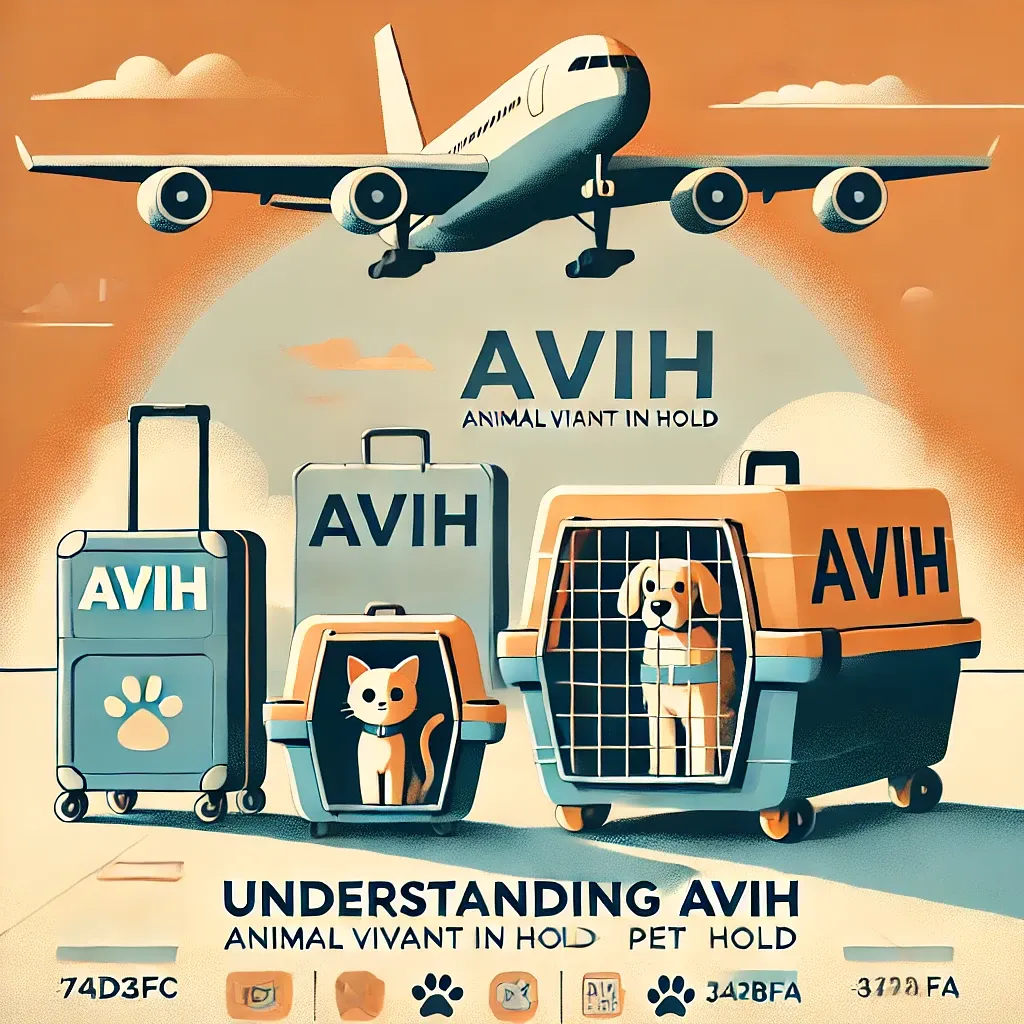What Does AVIH Mean?

Understanding AVIH: What You Need to Know
Traveling with pets can be stressful, especially when you need to transport them by air. There are various regulations and procedures in place to ensure the safety and well-being of animals in transit. One term that often comes up in this context is AVIH—an acronym that stands for Animal Vivant in Hold. This French term translates to Live Animal in Hold, referring to pets being transported in the cargo hold of an airplane rather than in the passenger cabin. This article will break down what AVIH means, when it applies, and what you need to consider when transporting your pet as an AVIH.
What Does AVIH Mean?
Animal Vivant in Hold or AVIH refers to a process where live animals, such as dogs, cats, or other pets, are transported in the cargo hold of an airplane. This is typically necessary for larger pets that exceed the weight or size restrictions for traveling in the cabin. The cargo hold is specially designed and ventilated to accommodate animals safely and comfortably.
Contrary to what some may think, the cargo hold is not just a storage area for luggage and goods. When an animal is designated as AVIH, they are placed in a specific section of the hold that is temperature-controlled and pressurized, similar to the passenger cabin. Airlines ensure that this section meets the requirements for safe animal transport, making it a suitable option for pet owners.
When Is AVIH Required?
AVIH is generally required when:
The Animal’s Size or Weight Exceeds Limits for Cabin Travel: Most airlines have strict size and weight limits for pets traveling in the cabin, usually around 8 kg (17 lbs) including the carrier. If your pet exceeds these limits, AVIH is necessary.
Traveling on Long-Haul Flights or to Certain Destinations: For some long-haul flights or flights to countries with strict quarantine rules, AVIH is the only permitted option for animal transport.
Airlines’ Policies: Each airline has its own policy regarding which animals can be transported in the cabin versus the hold, so it’s essential to check their requirements before booking your pet’s travel.
Preparing Your Pet for AVIH Transport
Transporting your pet as AVIH requires careful planning to ensure their safety and comfort. Here’s a step-by-step guide on how to prepare your pet for traveling in the hold:
Select the Right Carrier:
The first step is choosing an airline-approved pet carrier or crate. The International Air Transport Association (IATA) sets guidelines for animal containers, so it’s best to select a crate that complies with their standards. The carrier should be large enough for your pet to stand, turn around, and lie down comfortably. Ensure it’s well-ventilated and secure, with a locking mechanism that won’t open accidentally.Acclimate Your Pet to the Carrier:
Introduce your pet to the carrier several weeks before travel. Place their favorite toys or bedding inside to create a familiar and safe space. Gradually increase the time they spend in the crate so that they become comfortable with it.Health Check and Documentation:
Before the flight, take your pet to the veterinarian for a health check-up. Most airlines require a health certificate issued within 10 days of travel, confirming that your pet is fit to fly. Some destinations may also require additional vaccinations or treatments. Ensure all necessary documentation, such as vaccination records and permits, are in order.Feeding and Hydration:
Feed your pet a light meal 3-4 hours before the flight and provide them with water. Avoid feeding them too close to departure to prevent motion sickness. Attach a water dish to the inside of the carrier that can be refilled from the outside without opening the door.Label the Carrier:
Clearly label the carrier with your pet’s name, your contact information, and any special instructions for the handlers. Attach a photo of your pet to the top of the crate for easy identification.
What Happens During the Flight?
Once your pet is checked in, they will be transported to the aircraft’s cargo hold. The AVIH area is separate from other baggage and is designed to minimize noise and disturbance. The hold is pressurized and temperature-controlled, typically set to around 65-75°F (18-24°C), depending on the airline. Your pet’s crate will be securely fastened, and they will be monitored by ground staff before departure and upon arrival.
It’s normal for pets to experience some stress during the flight, but the conditions in the hold are designed to keep them as comfortable as possible. Some airlines even offer specialized pet transport services, where staff trained in animal care are responsible for overseeing the transport process from check-in to pick-up.
Arrival and Pick-Up
Once you arrive at your destination, pets traveling as AVIH are usually one of the last items to be unloaded. Depending on the airport, they may be delivered to a special handling area rather than the regular baggage claim. Be prepared to show identification and any required documentation to pick up your pet.
Tips for a Smooth AVIH Experience
- Book in Advance: AVIH services often have limited availability, so it’s best to book your pet’s travel as early as possible.
- Research the Airline’s Pet Policy: Every airline has specific rules for AVIH transport. Check the airline’s website or call their customer service to ensure you have the latest information.
- Consider the Season: Avoid traveling with your pet as AVIH during extreme weather conditions, as this could impact their safety in transit.
- Confirm Arrival Arrangements: Ensure there are no delays in picking up your pet once you land. They may need to relieve themselves and rehydrate after the journey.
Related Resources
Need Help?
Have questions about pet air travel? Visit our FAQ page or explore our comprehensive guides.
View FAQsYou Might Also Like

Alaska Airlines Cargo Door Arrives Open While Transporting Pets
On March 8, 2024, Alaska Airlines Flight 1423 departed Los Cabos, Mexico and arrived in Portland, Oregon with its cargo door unsealed and cracked open. The cargo hold was transporting passenger's pets, thankfully none of the animals were injured. The Alaska Airlines maintenance team inspected the aircraft, replaced a spring in the door, tested it and reentered it into service. This is a Boeing 737-800 (twin-jet) B738, Tail Number N513AS. Just weeks after a door plug blew off mid-air during Alaska Airlines Flight 1282 from Portland, Oregon to Ontario, California, Alaska Airlines sued Boeing for $1B over plane safety.

2024 Airline Pet Travel Summary
In 2024, the U.S. Department of Transportation (DOT) documented 12 pet-related air travel incidents, comprising 4 injuries and 8 deaths, with no reported losses.

November 2025 Airline Pet Travel Report
Great news for pet travelers! The November 2025 Air Travel Consumer Report shows zero pet travel incidents for September 2025. This marks another...
